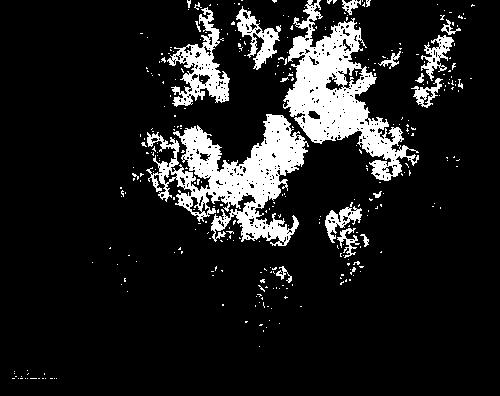Preparation method of ionic-bond cross-linked polymer vesicles
A technology for cross-linking polymers and ionic bonds
- Summary
- Abstract
- Description
- Claims
- Application Information
AI Technical Summary
Problems solved by technology
Method used
Image
Examples
Embodiment 1
[0017] Dissolve 1.0 g of sodium alginate and 2.0 g of N-isopropylacrylamide in 30 mL of distilled water, stir well and mix evenly, vacuumize, blow nitrogen, and add potassium persulfate with a mass concentration of 3% and Each 10 mL of sodium sulfite solution was reacted for 24 hours in a water bath at 40° C. under magnetic stirring. The reaction solution was poured into 100 mL of acetone for precipitation, and suction filtered to obtain a crude product. The crude product was extracted in a Soxhlet extractor with 80 mL of methanol for 24 hours, and dried in a vacuum oven for 24 hours to obtain sodium alginate grafted poly-N-isopropylacrylamide.
[0018] Take 0.1 g of sodium alginate grafted poly-N-isopropylacrylamide prepared above and dissolve it in distilled water to make a solution with a concentration of 0.5 mg / mL. Calcium chloride solution per mL was slowly dropped into the above solution, and continued to stir for 24 hours to obtain Ca 2+ Cross-linked polymersomes.
...
Embodiment 2
[0021] Dissolve 1.0 g of sodium alginate and 3.0 g of N-isopropylacrylamide in 40 mL of distilled water, stir and mix well, vacuumize, blow nitrogen, and slowly add potassium persulfate with a mass concentration of 3% under nitrogen protection and sodium sulfite solution (12 mL each), placed in a water bath at 40° C., and reacted for 24 hours under magnetic stirring. The reaction solution was poured into 100 mL of acetone for precipitation, and suction filtered to obtain a crude product. The crude product was placed in a Soxhlet extractor, extracted with 100 mL of methanol for 24 hours, and dried in a vacuum oven for 24 hours to obtain poly-N-isopropylacrylamide grafted with sodium alginate.
[0022] Take 0.1 g of the sodium alginate grafted poly-N-isopropylacrylamide prepared above and dissolve it in distilled water to form a solution with a concentration of 1.0 mg / mL. Dissolve 0.02 g of 5-fluorouracil in the above solution. Slowly drop 1.0 mg / mL calcium chloride solution in...
Embodiment 3
[0024] Dissolve 2.0g of sodium alginate and 4.0g of N-isopropylacrylamide in 50ml of distilled water, stir and mix well, vacuumize, blow nitrogen, and slowly add potassium persulfate with a mass concentration of 3% and Each 12 mL of sodium sulfite solution was placed in a water bath at 40° C. and reacted for 24 hours under magnetic stirring. The reaction solution was poured into 150 mL of acetone for precipitation, and suction filtered to obtain a crude product. The crude product was placed in a Soxhlet extractor, extracted with 100 mL of methanol for 24 hours, and dried in a vacuum oven for 24 hours to obtain a sodium alginate grafted poly-N-isopropylacrylamide copolymer.
[0025] Sodium alginate grafted poly-N-isopropylacrylamide prepared above was dissolved in distilled water to prepare a solution with a mass concentration of 0.5 mg / mL. Under stirring conditions, 0.02 The aluminum chloride solution of g doxorubicin was slowly dropped into the above solution, and continued ...
PUM
| Property | Measurement | Unit |
|---|---|---|
| particle diameter | aaaaa | aaaaa |
| particle diameter | aaaaa | aaaaa |
| particle diameter | aaaaa | aaaaa |
Abstract
Description
Claims
Application Information
 Login to View More
Login to View More - R&D
- Intellectual Property
- Life Sciences
- Materials
- Tech Scout
- Unparalleled Data Quality
- Higher Quality Content
- 60% Fewer Hallucinations
Browse by: Latest US Patents, China's latest patents, Technical Efficacy Thesaurus, Application Domain, Technology Topic, Popular Technical Reports.
© 2025 PatSnap. All rights reserved.Legal|Privacy policy|Modern Slavery Act Transparency Statement|Sitemap|About US| Contact US: help@patsnap.com

